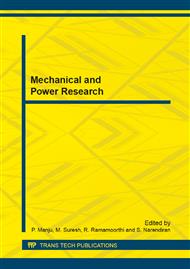p.14
p.21
p.30
p.39
p.48
p.53
p.62
p.71
p.83
Wear Characteristics of Phosphor-Bronze/Boron Carbide Particulate Composites
Abstract:
The tribological properties of metal matrix composites (MMC’s) is of interest in several applications like bearing sleeves, piston and cylinder liners, aircraft brakes etc. The wear behaviour of unreinforced as well as B4C particles reinforced phosphor-bronze alloy composite material is studied as a function of sliding speed and applied loads under un-lubricated conditions. The content of B4C particles in the composite was varied from 1-6% in steps of 2% by weight. A pin on disc wear testing machine was used to evaluate the wear rate, in which cast iron disc was used as the counterface. Loads of 10-30N in steps of 10N and speeds of 1.30, 1.83 and 2.30 m/s was employed. The results indicated that the wear rate of both the composites and the matrix alloy increased with increase in load and sliding speed. However, the composites exhibited lower wear rate than the alloys.
Info:
Periodical:
Pages:
48-52
Citation:
Online since:
May 2014
Authors:
Keywords:
Price:
Сopyright:
© 2014 Trans Tech Publications Ltd. All Rights Reserved
Share:
Citation:


